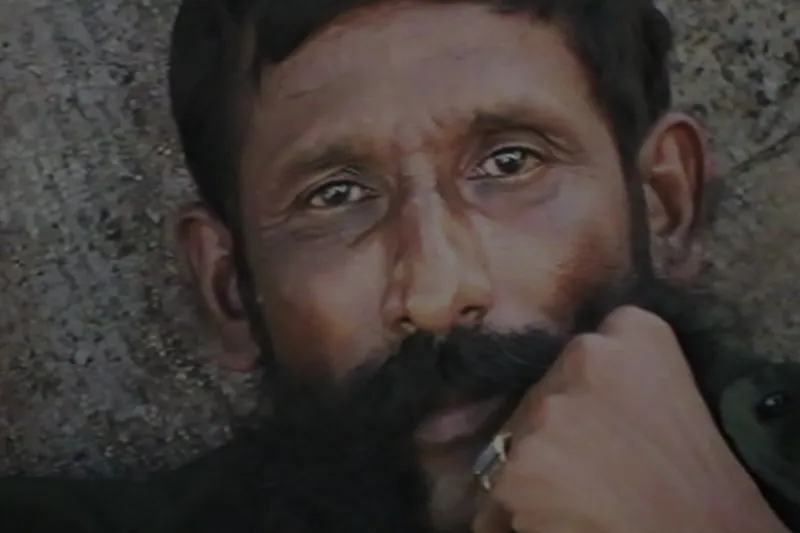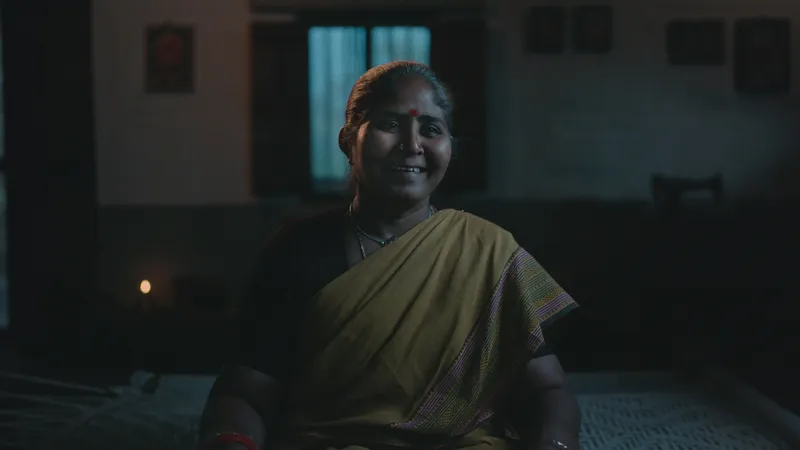Netflix docuseries The Hunt for Veerappan deconstructs India’s most fascinating criminal
Through detailed interviews with police and forest officers, his wife Muthulakshmi, and others close to Veerappan, director Selvamani Selvaraj refreshes the memory of the dreaded criminal.
Netflix docuseries The Hunt for Veerappan is an eye-opening and detailed account of the Indian bandit-turned-domestic terrorist who made the police, special task forces (STF), and three state governments dance to his cat-and-mouse game for over two decades. Veerappan was active from 1962 to 2003 approximately, in sandalwood smuggling and elephant poaching.
Veerappan, also known as the ‘Robinhood of India’, was born poor and grew up in harmony with the forest. Morphing himself and his gang in sync with the ways of the jungle gave him animal-like survival skills and strategy. Within an eight-kilometre radius, Veerappan and his gang could catch any alien sound, and warn each other with natural, bird-like songs and animal hoots. But that didn’t stop him from raiding the jungle to enrich himself.

Veerappan | Source: Netflix
Oppenheimer: Christopher Nolan is the masterful conductor of nuclear drama with thrills and scares
Notorious for poaching elephants for ivory and looting forests for sandalwood, the docuseries sheds light on some startling facts such as Veerappan killing over 1,000 elephants for their tusks. He then moved on to sandalwood smuggling across forest areas of Tamil Nadu and Karnataka. He smuggled sandalwood worth millions of dollars throughout his lifetime.
When forest officers warned about tusker deaths, no one cared. But when sandalwood, a state property, got almost depleted from the ecosystem, the police swung into action. An STF was formed and stationed outside Veerappan’s home to capture him.
Here on, begins the saga of police and forest officials either getting killed or failing to capture the bandit. Even joint elite police operations, along with the Border Security Force (BSF), couldn’t nab the forest brigand and his motley crew for over two decades.
The four-part docuseries by director Selvamani Selvaraj captures the officials’ frustrations and their thankless sacrifices to show the difficulties that men in uniform faced carrying out this task. Many died, and many had to live in the forest for many years with mental anguish. Innocent civilians also had to go through illegal and cruel torture by police officials. Their experiences of hunting him are about sacrifice, courage, rage, and personal difficulty, and have found ample space here.
By getting interviews from all sides of this story, a thorough portrait of Veerappan emerges in this docuseries. To some villagers and locals, he was like a Robinhood as he gave them money and wealth when the state failed to bring jobs or development. To others, he was to be feared, not idolised.
A heartbreaking example of this can be seen in the docuseries where P Srinivas, a forest officer, was brutally murdered, beheaded, and punished for his efforts to compel Veerappan to negotiate. When the STF was carrying out hostile operations and sweeping up locals for ‘interrogation’ in an unregulated building, Srinivas was fighting a solitary battle of bringing reform and healthcare to local women and people in Gopinatham, Veerappan's village. He also found a job for Veerappan’s sister Mariyamma and was friendly with most people. A visit to the jungle with the brigand’s brother only ended up in Srinivas getting massacred. Srinivas was mourned by locals and government officials alike.
This incident is symptomatic of the devastating impact of Veerappan’s actions on the lives of villagers living around these forests. Under suspicion, many were arrested or tortured by the police, off record.
An appalling detail in this saga of shocking details is the fact that 1,000 villagers—men and women—were arrested and detained under TADA as collaborators of Veerappan from the area around Gopinatham village. No charges were made nor were any FIRs lodged.
While Veerappan enriched locals, he also hurt their reputation for eternity. Suffering from his decisions were his wife, Muthulakshmi and his daughters. Arrested by the police after a jungle raid, Muthulakshmi was tortured, humiliated, and had to live in police custody for eight years. She never saw her daughters grow up as she had to keep hiding in the jungles with her husband. Loyal to his memory to date, her defences seem to melt when a hard fact shows up. She says, after a headline-grabbing kidnapping, Veerappan made a host of ransom demands but never asked for a chance to see his children or his spouse. Her interview is the most poignant conversation in this docuseries.

Muthulakshmi, Veerappan's wife | Source: Netflix
Bollywood and stereotypes: Bengali-Punjabi tropes minimise rich cultures
Beyond the massacres and the efficient strategic planning, Veerappan’s phase of courting revolution is amusing. He grabbed national headlines for kidnapping legendary Kannada movie actor Dr Rajkumar. Kept hostage for nearly three months, the celebrity became friends with the brigand, listening to forest melodies and adapting to nature smoothly. Like negotiators and journalists that interacted with the brigand, Rajkumar was affected by his child-like nature, an incredible detail around this murderous criminal.
References to Vanadevathai (forest angel) and a connection to the gods of the forest by Veerappan reinforce India’s age-old belief in the divine in almost every reality. It imbibed him with a Robinhood, vigilante, and mystical image, which is at best, an elaborate lie.
The Hunt for Veerappan concludes with the smart tactics by which the brigand was finally captured and killed in a joint operation by the Karnataka and Tamil Nadu police forces. However, it raises questions about his final capture by the STF and celebrated police officer, Vijay Kumar. Police officers and forest officers like BK Singh (DFO), ‘Tiger’ Ashok Kumar, the controversial Shankar Bidari, and officer Senthamangai Kannan contrast with the voices of Veerappan ex-gang members, local folk, and negotiators.
Director Selvaraj uses mesmerising top-angle wide shots that roll over the dense and impenetrable jungles spread across Tamil Nadu, Karnataka, and Kerala, to establish the challenges that such a landscape brings.
The details are rich and intriguing. Trouble is, it is so well-researched and packed with testimonials and interviews that for an outsider stepping into the mystical and verdant world of the ‘forest-king’, and the complicated, long hunt to find him, the thrill could be lost in the detail. But for thriller and true crime buffs, The Hunt for Veerappan makes for near-perfect viewing.
Rating: 3.5/5
Edited by Megha Reddy







